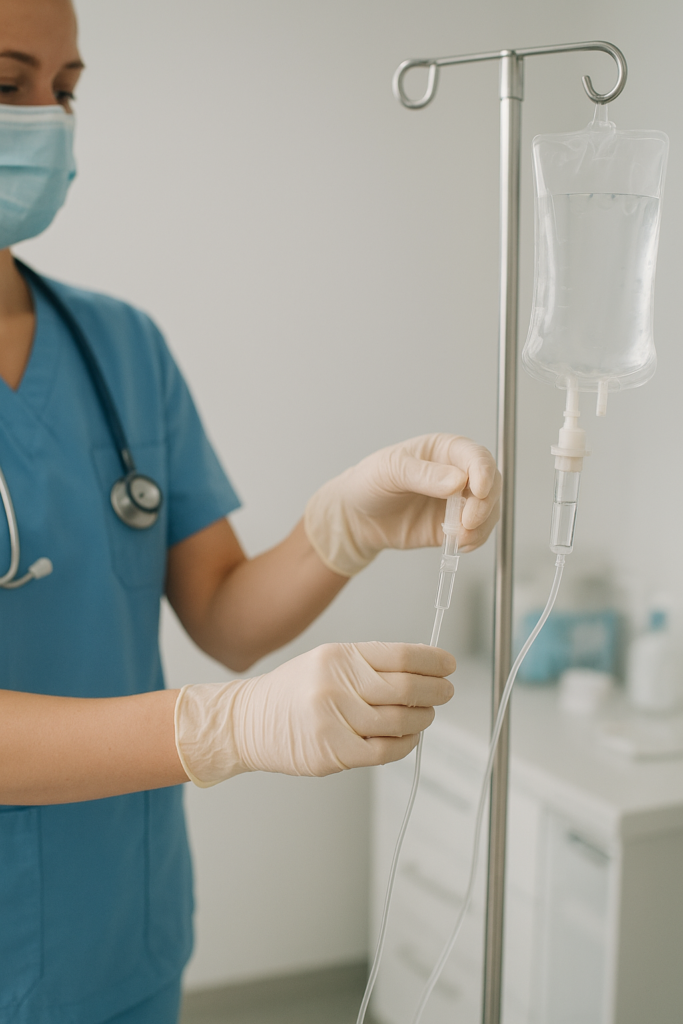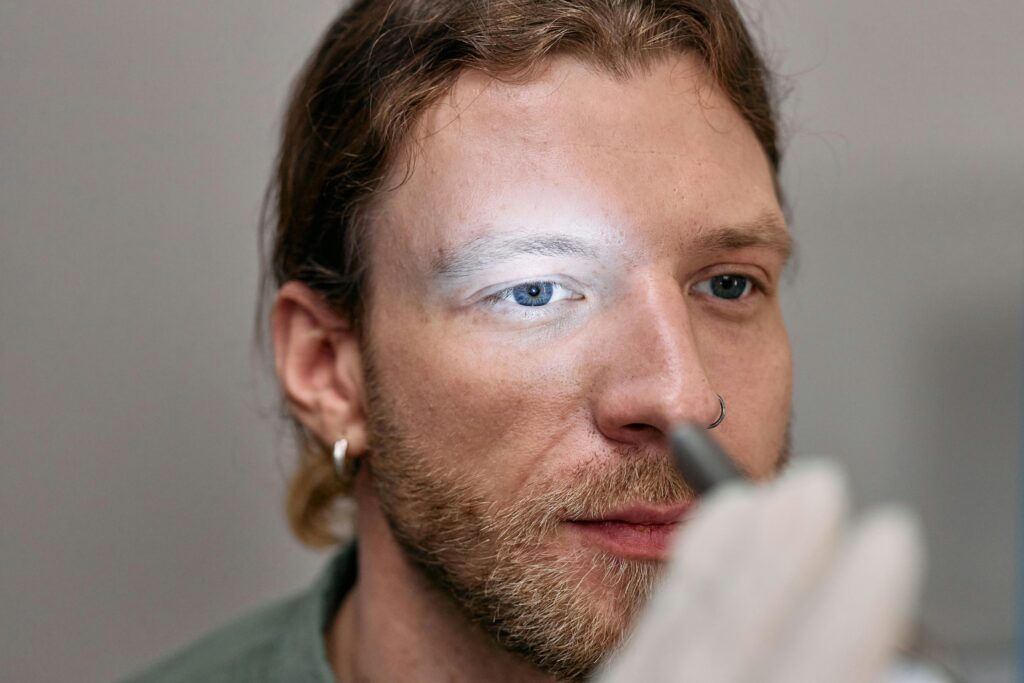Thyroid Eye Disease Treatment is not a simple, single path. For those who suffer from the pain, disfigurement, and potential vision loss caused by Thyroid Eye Disease (TED), finding the right balance of medical and surgical intervention is a journey requiring expert guidance.
TED, also known as Graves’ Ophthalmopathy, is far more than just “bulging eyes.” It is a complex, progressive autoimmune condition that causes inflammation and swelling of the tissues behind the eye. Without appropriate, timely treatment, this condition can permanently alter a patient’s appearance and threaten their eyesight.
This comprehensive guide is dedicated to providing you with the necessary, evidence-based knowledge—from the early warning signs and diagnostic stages to the revolution of modern treatments like Teprotumumab (Tepezza) and sophisticated surgical solutions. Our aim is to empower you to take control of your vision health and navigate the complexities of Thyroid Eye Disease Treatment.
1. What is Thyroid Eye Disease (TED)?
Thyroid Eye Disease is a distinct autoimmune disorder, primarily linked to, but separate from, hyperthyroidism (overactive thyroid) caused by Graves’ disease. In TED, the immune system mistakenly attacks the muscles and fatty tissues surrounding the eyes, triggering a fierce inflammatory response.
TED vs. Graves’ Disease
While up to 90% of TED patients have Graves’ disease, it is critical to understand they are two separate conditions:
- Graves’ Disease involves the immune system attacking the thyroid gland, leading to hyperthyroidism.
- Thyroid Eye Disease (TED) involves the immune system attacking the orbital tissues (the area behind the eyeballs).
Crucially, the eye disease can occur before, during, or even years after the thyroid hormone levels have been brought under control. Controlling thyroid hormones is essential for general health, but it often does not stop the progression of the eye disease, underscoring the necessity of dedicated Thyroid Eye Disease Treatment.
Did You Know?
Thyroid Eye Disease (TED) is classified as a “rare disease” in the United States, yet it is the most common cause of eye bulging (proptosis) in adults. The inflammation in TED follows a strict timeline: it is active for 6 to 24 months, after which the disease becomes stable. This timeframe is critical because most non-surgical **Thyroid Eye Disease Treatment** must be initiated during this initial active phase to prevent irreversible damage.

The Autoimmune Trigger: IGF-1R and TSHR
At the cellular level, TED is characterized by the presence of antibodies that mistakenly target two receptors on the cells in the eye orbit:
- Thyroid Stimulating Hormone Receptor (TSHR): These receptors are found on the thyroid gland, but also on orbital fibroblasts (connective tissue cells) behind the eye.
- Insulin-like Growth Factor 1 Receptor (IGF-1R): This receptor is found on these same orbital fibroblasts.
When TSHR and IGF-1R are activated by the rogue immune antibodies, the fibroblasts behind the eye start to proliferate and swell, producing excessive amounts of a substance called glycosaminoglycans (GAGs). This swelling and accumulation of fluid stiffens the eye muscles and pushes the eyeball forward, resulting in proptosis (bulging eyes) and other debilitating symptoms.
Why Timely Thyroid Eye Disease Treatment is Crucial
TED follows a typical two-phase course that dictates the type of Thyroid Eye Disease Treatment required:
- Active (Inflammatory) Phase: This phase lasts 6 to 24 months and is characterized by rapid and painful progression, redness, swelling, and potential vision-threatening complications. Treatment during this phase focuses on reducing inflammation.
- Inactive (Stable/Fibrotic) Phase: After the active phase, the inflammation subsides, but the damage (fibrosis, scarring, and permanent swelling) remains. Treatment in this phase is typically surgical, aimed at reversing the structural damage.
Early and aggressive treatment during the Active Phase is the single most important factor in preventing permanent vision loss and minimizing the need for complex surgeries later on.
2. Causes and Risk Factors
Understanding the risk factors is crucial for early detection and prevention, making it a core part of preventative Thyroid Eye Disease Treatment discussions.
The Role of Smoking (Major Risk Factor)
Smoking is unequivocally the single greatest modifiable risk factor for developing TED, and for experiencing a more severe, resistant, and recurrent course of the disease.
- Increased Risk: Smokers are up to 8 times more likely to develop TED compared to non-smokers.
- Treatment Resistance: Smoking significantly reduces the effectiveness of all medical treatments, including corticosteroids and radiation.
- Recommendation: For any patient diagnosed with TED, smoking cessation is the first and non-negotiable step in their Thyroid Eye Disease Treatment plan.
Gender and Genetics
TED is more common and often more severe in women, though men who contract the disease tend to have a more virulent course, including a higher risk of developing vision-threatening compressive optic neuropathy. A family history of Graves’ disease or other autoimmune disorders increases susceptibility to TED.

Radioactive Iodine Treatment (RAI)
While Radioactive Iodine (RAI) is an effective treatment for hyperthyroidism, it can, in some cases, trigger or worsen TED in patients who already have the eye disease or are at high risk. This risk is primarily due to the sudden destruction of the thyroid gland, releasing antigens into the bloodstream. If a patient requires RAI, an ophthalmologist may administer a short course of corticosteroids alongside the RAI to mitigate the risk of TED exacerbation.
Frequently Asked Questions (FAQ) about Thyroid Eye Disease Treatment
Q: Can Thyroid Eye Disease (TED) be cured completely? A: Currently, there is no single cure for the underlying autoimmune condition causing TED. However, modern treatments—especially biologics like Teprotumumab (Tepezza) and precise surgery—can successfully manage symptoms, halt the progression of the disease, and significantly restore vision and appearance. Thyroid Eye Disease Treatment focuses on achieving remission and reversing damage.
Q: How long does the Active (Inflammatory) Phase of TED last? A: The active, inflammatory phase typically lasts between 6 and 24 months. During this period, symptoms rapidly progress (swelling, redness, pain). Initiating effective Thyroid Eye Disease Treatment during this active window is crucial to prevent permanent scarring and irreversible changes.
Q: Is Teprotumumab (Tepezza) a cure or a treatment for TED? A: Teprotumumab is a targeted treatment, not a cure. It works by blocking the IGF-1R receptor, which is central to the disease’s mechanism. It is highly effective in reducing inflammation and proptosis (bulging) during the active phase and represents the most significant breakthrough in Thyroid Eye Disease Treatment in decades.
Q: What is the main goal of surgery in Thyroid Eye Disease Treatment? A: Surgery (orbital decompression, muscle, and eyelid surgery) is generally reserved for the chronic, stable phase. The primary goals are functional and aesthetic: to relieve pressure on the optic nerve, correct double vision (diplopia), and restore the normal appearance of the eye and eyelids.
Q: Does controlling my thyroid hormone levels stop TED progression? A: While controlling hyperthyroidism is vital for overall health, regulating thyroid hormone levels alone usually does not stop the progression of the eye disease. TED requires its own specialized Thyroid Eye Disease Treatment plan, often managed by an ophthalmologist or oculoplastic surgeon.
Conclusion: Hope and Lifelong Management
Thyroid Eye Disease Treatment has undergone a dramatic revolution, transforming the prognosis for patients worldwide. What was once a condition often leading to permanent disfigurement and vision loss is now increasingly manageable through sophisticated, targeted therapies.
The most critical takeaway is the need for early, aggressive intervention during the initial, inflammatory phase of the disease. Whether through timely steroid treatment or the introduction of groundbreaking biologics like Teprotumumab, halting the autoimmune attack before significant scarring occurs is paramount.
While TED requires lifelong monitoring, the combination of advanced medical options and skilled reconstructive surgery ensures that patients can achieve excellent functional and aesthetic outcomes. If you suspect any symptoms of TED, consult an experienced oculoplastic surgeon or neuro-ophthalmologist immediately to secure the best possible Thyroid Eye Disease Treatment plan.



